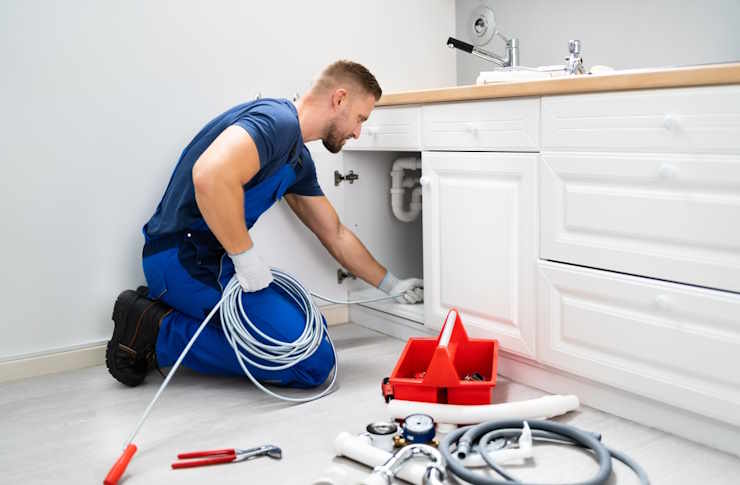What To Know About Roof Repair And Replacement Costs In 2025
Understanding the financial aspects of maintaining your home's roof is essential for homeowners planning repairs or replacements. With material costs, labor rates, and regional variations all playing significant roles, knowing what to expect can help you budget effectively and make informed decisions about your roofing project.

Your roof is one of the most critical components of your home, protecting everything beneath it from the elements. As we move through 2025, many homeowners are evaluating whether to repair existing damage or invest in a complete replacement. The decision often comes down to understanding the costs involved, recognizing when replacement becomes necessary, and finding options that fit within your budget. This guide breaks down the essential information you need to navigate roofing expenses and make the right choice for your property.
Why Roof Replacement Is Necessary
Roof replacement becomes necessary for several compelling reasons that go beyond simple cosmetic concerns. The most common trigger is age—most asphalt shingle roofs last between 20 and 30 years, while metal and tile roofs can endure 40 to 70 years. When a roof approaches or exceeds its expected lifespan, structural integrity begins to decline, making replacement more cost-effective than repeated repairs. Extensive damage from severe weather events, including hail, wind, or fallen trees, can compromise multiple areas simultaneously, rendering repairs insufficient. Persistent leaks that have caused water damage to the underlying decking or interior structures require comprehensive solutions that only replacement can provide. Additionally, missing or damaged shingles across large sections, visible sagging, or widespread granule loss indicate that the roofing system has reached the end of its functional life. Energy efficiency concerns also drive replacement decisions, as older roofs lack modern insulation and reflective properties that reduce heating and cooling costs. Homeowners planning to sell may opt for replacement to increase property value and appeal to potential buyers.
What Are the Roofing Costs in the U.S.?
Roofing costs across the United States vary significantly based on geographic location, material selection, roof size, complexity, and labor rates. As of 2025, the national average for a complete roof replacement on a standard single-family home ranges from approximately 8,000 to 25,000 dollars. Asphalt shingles, the most popular choice, typically cost between 5,000 and 12,000 dollars for an average-sized home, while premium materials like metal roofing can range from 10,000 to 30,000 dollars. Tile and slate roofs represent the higher end, often exceeding 25,000 to 50,000 dollars due to material costs and specialized installation requirements. Labor accounts for roughly 40 to 60 percent of total project costs, with rates varying by region—urban areas and coastal regions generally command higher prices than rural locations. Additional factors affecting cost include roof pitch (steeper roofs require more safety equipment and time), the number of penetrations like chimneys and skylights, removal and disposal of old materials, and necessary repairs to underlying structures. Permits and inspections add several hundred dollars to most projects. Minor repairs, by contrast, typically range from 150 to 1,500 dollars depending on the extent of damage and accessibility.
| Service Type | Provider Examples | Cost Estimation |
|---|---|---|
| Asphalt Shingle Replacement | GAF, Owens Corning, CertainTeed | 5,000 - 12,000 dollars |
| Metal Roofing Installation | ABC Supply, Metal Sales Manufacturing | 10,000 - 30,000 dollars |
| Tile Roofing Installation | Boral Roofing, Eagle Roofing Products | 15,000 - 40,000 dollars |
| Slate Roofing Installation | North Country Slate, Greenstone Slate | 25,000 - 50,000+ dollars |
| Minor Repairs | Local roofing contractors | 150 - 1,500 dollars |
Prices, rates, or cost estimates mentioned in this article are based on the latest available information but may change over time. Independent research is advised before making financial decisions.
Finding an Affordable Roof Replacement
Finding an affordable roof replacement requires strategic planning and thorough research rather than simply choosing the lowest bid. Start by obtaining multiple quotes from licensed and insured contractors in your area—aim for at least three to five detailed estimates that break down material and labor costs separately. Verify credentials by checking state licensing boards, Better Business Bureau ratings, and online reviews from previous customers. Timing your project during the off-season, typically late winter or early fall, can result in lower prices as contractors compete for work during slower periods. Consider mid-range materials that balance quality and cost—premium architectural shingles offer better durability than basic three-tab shingles without the expense of metal or tile. Ask about financing options, as many roofing companies partner with lenders to offer payment plans with competitive interest rates. Investigate whether your homeowner’s insurance covers any portion of the replacement, particularly if damage resulted from a covered event like a storm. Some local and state programs offer grants or low-interest loans for energy-efficient upgrades, which may apply if you choose reflective or insulated roofing materials. Avoid contractors who demand large upfront payments or pressure you into immediate decisions—reputable professionals provide written contracts with clear timelines and payment schedules. While cost matters, prioritize value over the absolute lowest price, as quality installation directly impacts longevity and performance.
Understanding the Full Scope of Roofing Projects
A comprehensive roofing project involves more than simply installing new shingles or panels. Professional contractors conduct thorough inspections to assess the condition of underlying components, including decking, flashing, ventilation systems, and drainage elements. Damaged decking requires replacement before new roofing materials can be installed, adding to overall costs but ensuring structural soundness. Proper ventilation prevents moisture buildup and extends roof life, so contractors may recommend upgrades to ridge vents, soffit vents, or attic fans. Flashing around chimneys, skylights, and roof valleys must be correctly installed to prevent leaks at vulnerable transition points. Gutter systems often require attention during roofing projects, as damaged or inadequate gutters compromise the new roof’s effectiveness. Homeowners should discuss warranty options for both materials and workmanship—manufacturer warranties typically cover defects for 20 to 50 years, while contractor warranties address installation issues for 5 to 25 years. Understanding these components helps you evaluate quotes accurately and ensures your investment delivers long-term protection.
Preparing for Your Roofing Investment
Proper preparation maximizes the value of your roofing investment and minimizes disruptions. Before work begins, clear the area around your home’s perimeter to provide contractors with safe access and protect landscaping from falling debris. Move vehicles from the driveway and garage to prevent damage from materials or equipment. Inside your home, remove wall hangings and secure fragile items, as vibrations from roofing work can cause items to shift or fall. Communicate with neighbors about the project timeline, as noise and activity may affect adjacent properties. Establish clear communication channels with your contractor, including daily check-ins and a point person for questions or concerns. Review the contract thoroughly, ensuring it specifies materials by brand and grade, project timeline, payment schedule, cleanup procedures, and warranty details. Confirm that the contractor carries adequate liability insurance and workers’ compensation coverage to protect you from potential claims. Document your roof’s condition before work begins with photographs and written notes, providing a baseline for insurance purposes and quality assurance. With proper planning and informed decision-making, your roof replacement can proceed smoothly and deliver decades of reliable protection.




